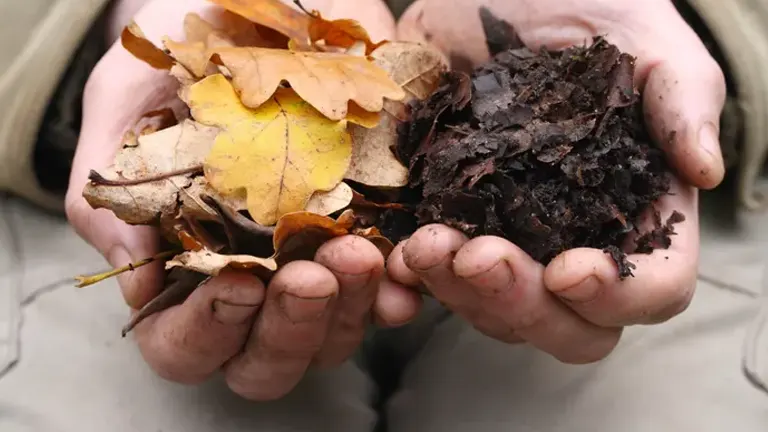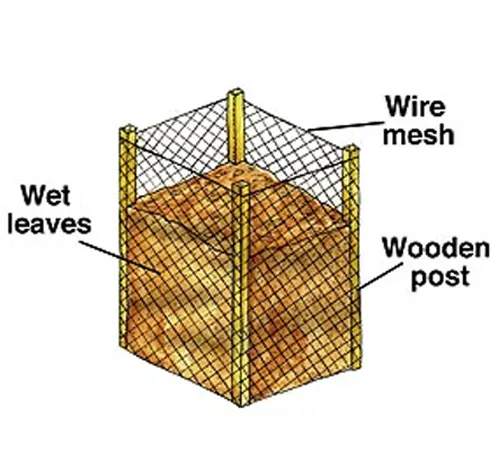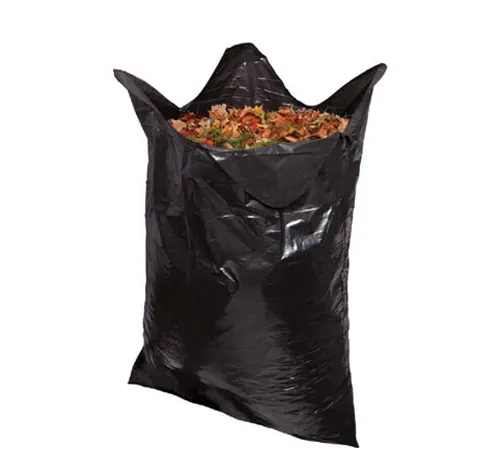Leaf Mold: Nature’s Gift to Gardeners
- December 27, 2023
- 1 comment
Explore the transformative power of leaf mold in ‘Unveiling the Magic of Leaf Mold: A Gardener’s Ally.’ Discover how this natural, easy-to-make resource can enrich your garden, enhance soil quality, and promote plant health. Learn to harness the underrated magic of leaf mold for a thriving, sustainable garden.

In the lush tapestry of gardening, leaf mold emerges as a hidden gem, offering a symphony of benefits to the soil and plants. This article is a deep dive into the world of leaf mold, revealing its simple yet transformative creation process and its profound impact on garden health. Often underappreciated in places like the United States, leaf mold is a cornerstone of organic gardening in the UK, prized for its ability to enrich and revitalize garden soil naturally. Join us as we uncover how this cost-free and eco-friendly resource can elevate your gardening game, bringing vitality and balance to your green haven.
What is Leaf Mold?
At its core, leaf mold is nothing more than leaves in the midst of decomposition. You can find this naturally occurring substance in wooded areas, where it forms a crumbly, brown layer beneath dry leaves. It’s characterized by its earthy aroma and texture, offering a glimpse into nature’s simple yet effective way of soil enrichment.
The Advantages of Using Leaf Mold in Your Garden
Leaf mold, a natural byproduct of decomposed leaves, offers a treasure trove of benefits for gardeners. Here’s a closer look at how leaf mold can transform your gardening experience:

- One of the most remarkable properties of leaf mold is its ability to retain water. It can absorb up to 500% of its weight in water, significantly enhancing soil moisture retention. This capacity reduces the need for frequent watering, minimizes evaporation, and helps to keep plant roots cool during hot weather.
- Freshly fallen leaves are usually slightly acidic, but as they transform into leaf mold, their pH gradually shifts towards neutrality. This subtle change can help moderate the pH levels of your garden soil, creating a more hospitable environment for a wide range of plants.
- The regular addition of leaf mold to your garden soil works wonders in improving its overall quality. It enriches the soil texture, making it more friable and easier for plant roots to penetrate. Moreover, leaf mold increases the soil’s water-holding capacity, ensuring that plants have access to moisture when they need it. Additionally, it fosters a thriving ecosystem of beneficial soil organisms, essential for healthy plant growth.
Incorporating leaf mold into your gardening routine can yield significant improvements in plant health and soil condition, showcasing its role as an invaluable, natural gardening asset.
The Journey from Leaf to Leaf Mold: Understanding the Process
Creating leaf mold is a ‘cold’ composting process, driven mainly by fungi, which decompose the leaves slowly and effectively. The process is influenced by factors such as leaf type, moisture, nitrogen content, and leaf size. Shredding leaves accelerates decomposition, and maintaining a moist environment is crucial for the fungi responsible for breaking down the leaves.
Assembling Your Leaf Mold Pile
For optimal results, create a leaf pile around six feet square and five feet high. Approximately 25 trash bags full of leaves are needed for a pile this size. This size ensures sufficient moisture and heat retention to produce leaf mold within a year.
Alternative Methods
Enclosures
Placing leaves in a wooden or wire enclosure (4 or 5 feet square) is an effective method. Wet the pile, cover it with a tarp, and check the moisture periodically. In dry climates, lining the enclosure with cardboard or plastic can help retain moisture. Stirring the leaves occasionally introduces fresh oxygen into the pile.

Trash Bags
An easy method is to pack shredded, moistened leaves into black trash bags. Poke a few holes in the bags for aeration. For whole or dry leaves, add moisture and a shovelful of garden soil, compost, or manure before sealing the bags. Store these bags out of the way for a year or two.

Utilizing Leaf Mold in Your Garden
Once soft and crumbly, the leaf mold is ready to use. It should be applied no more than 3 inches thick around plants, keeping it away from the base to prevent pest issues. Leaf mold can be incorporated into the soil, used in vegetable gardens, or added to new garden beds and containers. It’s an excellent alternative to peat moss, especially for improving soil in shade gardens or adjusting sandy or heavy soils.
Conclusion
Leaf mold represents a simple, yet profoundly beneficial, addition to any garden. As gardeners in the United States become more aware of its value, the utilization of this natural resource is bound to increase. With leaves being abundantly available and free, there’s no better time to start creating this “super-premium, extra-fancy” mulch for your garden. Grab a rake, and let the magic of leaf mold enhance your gardening experience!
FAQs
- Is Leaf Mold Different from Compost?
Yes, leaf mold and compost are distinct. Leaf mold is made solely from decomposed leaves and primarily uses fungi for decomposition, while compost is a mix of various organic materials broken down mostly by bacteria. - Can Leaf Mold Cause Allergies Like Dry Leaves?
Generally, leaf mold is less likely to cause allergies compared to dry leaves. The decomposition process reduces the presence of allergens found in fresh leaves. - Does Leaf Mold Attract Pests or Animals?
Leaf mold is not a typical attractant for pests or animals. Unlike compost, which may contain food scraps, leaf mold primarily consists of leaves and does not emit odors that attract animals. - Can Leaf Mold Be Used in Hydroponic Systems?
While unconventional, leaf mold can be experimented with in hydroponic systems as a soilless growing medium, given its excellent water retention properties. - Is There a Way to Speed Up the Leaf Mold Process?
Shredding the leaves and maintaining adequate moisture can accelerate the process. Adding a small amount of nitrogen-rich material, like grass clippings, can also speed up decomposition. - Are There Any Plants That Don’t Respond Well to Leaf Mold?
Most plants thrive with leaf mold. However, plants requiring highly acidic or alkaline soils might not benefit as much, since leaf mold tends to be more neutral in pH. - Can I Make Leaf Mold in an Apartment Setting?
Yes, leaf mold can be made on a smaller scale using containers or bags on balconies or patios. Ensure proper moisture and air circulation for effective decomposition. - Does the Type of Tree Affect the Quality of Leaf Mold?
Yes, the tree species can influence decomposition rates and nutrient content. For example, oak leaves decompose slower due to their higher lignin content, while maple leaves decompose faster. - How Does Leaf Mold Impact Soil Microorganisms?
Leaf mold enhances soil biology by providing a habitat and food source for beneficial microorganisms, which in turn support plant health. - Can Leaf Mold Be Used as a Seed Starting Mix?
While not commonly used alone for seed starting due to its texture, leaf mold can be mixed with other components like perlite or compost to create a nutritious seed starting mix.
Your insights matter! Share your experiences and thoughts on Leaf Mold: Nature’s Gift to Gardeners in the comments. Help fellow gardeners make informed decisions and enrich our gardening knowledge. Join the conversation and be part of the gardening community’s growth!

David Murray
Forestry AuthorI'm David Murry, a forestry equipment specialist with a focus on chainsaw operation. With over 13 years of experience, I've honed my skills in operating and maintaining a wide range of machinery, from chainsaws to log splitters. My passion for the outdoors and commitment to sustainable forestry drive my work, which emphasizes safety, efficiency, and staying updated with industry advancements. Additionally, I'm dedicated to sharing my expertise and promoting environmental awareness within the forestry community.


Great article! I use leaf mold on a regular basis.
Robert w lavrakas
January 5, 2024 1:42 am